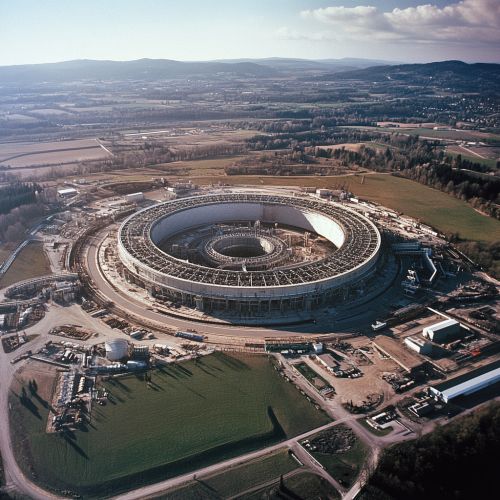European Organization for Nuclear Research
Introduction
The European Organization for Nuclear Research, commonly known by its French acronym CERN, is a preeminent scientific institution dedicated to the research of fundamental particles that constitute the universe. Established in 1954, CERN is located on the Franco-Swiss border near Geneva and has become synonymous with groundbreaking discoveries in the field of particle physics. The organization operates the largest particle physics laboratory in the world and is renowned for its flagship project, the LHC.
History
Founding and Early Years
CERN was founded in the aftermath of World War II, a period marked by a desire for scientific collaboration across Europe. The idea was to create a center where European scientists could collaborate on nuclear research, a field that was rapidly advancing. The founding convention was signed in 1953 by 12 European countries, and CERN officially came into existence on September 29, 1954. The initial focus was on nuclear physics, but the scope soon expanded to include particle physics, a field that would define CERN's future.
Development of Particle Accelerators
CERN's first accelerator, the Synchrocyclotron, began operation in 1957. It was followed by the Proton Synchrotron in 1959, which was a significant technological leap forward. These early accelerators laid the groundwork for the development of more advanced machines, such as the Super Proton Synchrotron and eventually the LHC. Each of these accelerators played a crucial role in advancing our understanding of particle physics.
Major Facilities
Large Hadron Collider
The LHC is the world's largest and most powerful particle accelerator. It consists of a 27-kilometer ring of superconducting magnets and a number of accelerating structures to boost the energy of the particles. The LHC is located in a tunnel 100 meters underground, straddling the border between Switzerland and France. It was designed to collide opposing particle beams, primarily protons, at unprecedented energy levels to explore the fundamental forces of nature.
Other Accelerators and Detectors
In addition to the LHC, CERN operates several other accelerators, including the SPS and the PS. These facilities serve as pre-accelerators that increase the energy of particles before they are injected into the LHC. CERN also hosts a variety of detectors, such as ATLAS and CMS, which are used to observe and analyze the results of particle collisions.


Scientific Discoveries
Higgs Boson Discovery
One of CERN's most notable achievements is the discovery of the Higgs boson, a fundamental particle associated with the Higgs field, which gives mass to other particles. This discovery was made in 2012 by the ATLAS and CMS collaborations at the LHC. The Higgs boson was the last missing piece of the Standard Model, a theory that describes the fundamental particles and their interactions.
Antimatter Research
CERN has also made significant contributions to antimatter research. The Antiproton Decelerator facility allows scientists to study antimatter by producing and storing antiprotons. This research has implications for understanding the asymmetry between matter and antimatter in the universe, a fundamental question in cosmology.
Technological Innovations
Superconducting Magnets
CERN has been at the forefront of developing superconducting magnet technology, which is essential for the operation of high-energy accelerators like the LHC. These magnets are cooled to temperatures close to absolute zero to achieve superconductivity, allowing them to generate powerful magnetic fields without electrical resistance.
Grid Computing
To handle the vast amounts of data generated by the LHC, CERN pioneered the development of grid computing. This technology allows for the distributed processing and analysis of data across a network of computers, enabling researchers worldwide to collaborate on experiments and share results efficiently.
International Collaboration
CERN is a model of international scientific collaboration, with member states from across Europe and beyond. It also has numerous observer states and partners from around the world. This collaborative framework allows CERN to pool resources and expertise, fostering a global community of scientists working towards common goals.
Educational and Outreach Activities
CERN is committed to education and public outreach, offering a variety of programs for students, teachers, and the general public. These initiatives aim to inspire the next generation of scientists and promote a broader understanding of particle physics and its significance.
Future Prospects
CERN continues to push the boundaries of particle physics, with plans for future upgrades to the LHC and the development of new facilities, such as the proposed Future Circular Collider. These projects aim to explore new frontiers in physics, including the search for dark matter and the study of neutrinos.
